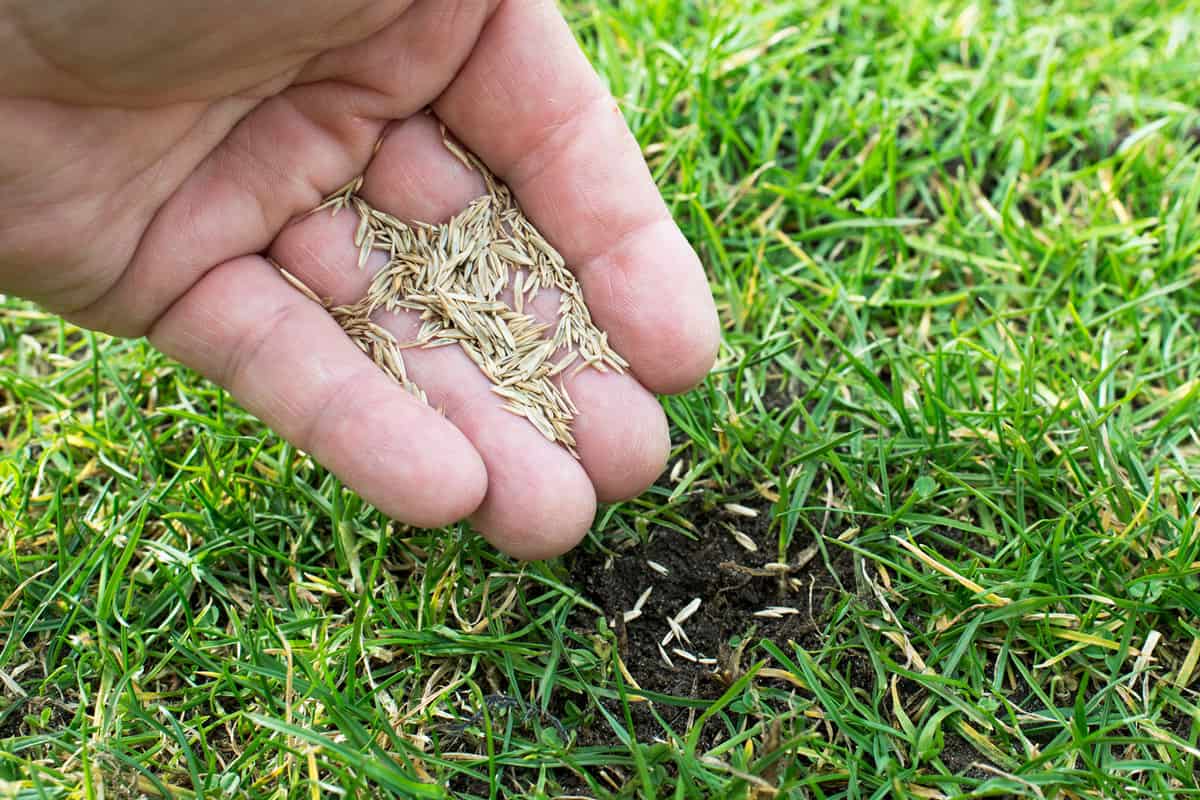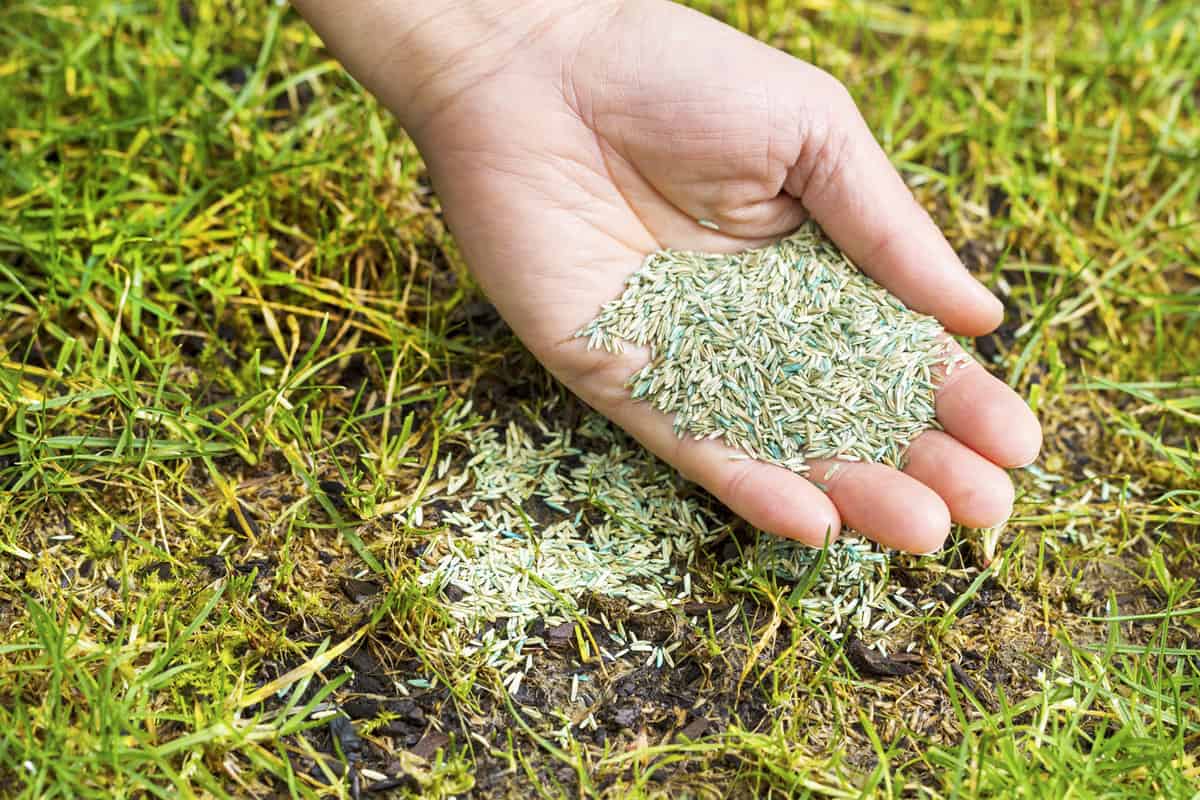Grass seeds are the building blocks of a great lawn. Every good-looking lawn came about as a result of well-monitored and controlled growth of the grass seed. Proper seeding is key to proper growth. In this post, we have carefully researched the question for more details on grass seeds drying out.
Without water, grass seed dries out in 12 to 24 hours. Your grass seed may start to dry out in as little as 12 hours if your lawn is sunny and the daily high temperature is above 75°F (24°C). To keep each seed moist, it is crucial to water new grass seeds twice daily—in the early morning and late afternoon.
If you will like to learn about grass seed, its growth process, and how it can be efficiently utilized, keep reading this article as this would be further explained down the post.

What is Grass Seed?
Simply put, grass seed is the seed of grass. Every lawn you've ever seen had a healthy dosage of this seeded material at one point. However, in order to create the kind of vibrant, green grass that people and even dogs learn to appreciate, you need to know more about this horticulture requirement.
How Quickly Does Grass Seed Dry Out?

The length of time it takes for the grass seeds to dry, assuming ordinary temperatures, can also depend on how saturated the grass seeds may already be from prior rain. Showers in the sun are less frequent.
When this happens, you'll frequently even see a rainbow because rain showers and sunshine are both present at the same moment. Without water, grass seed dries out in 12 to 24 hours. Your grass seed may start to dry out in as little as 12 hours if your lawn is sunny and the day's high temperature is above 75°F (24°C).
To keep each seed moist, it is crucial to water new grass seeds twice daily—in the early morning and late afternoon. In about 2 days grass seed will dry out, depending on the climate and soil. Grass seeds can't live without water for more than a few days.
Missed a Day of Watering Grass Seed - Now What?

A freshly seeded lawn has to be watered. At this point in the development of the lawn, it is the most crucial task. It might be really frustrating to forget to water your grass seed on a given day. Perhaps you want to try watering more the next day. Or perhaps you suddenly feel the need to water your yard.
The majority of the time, skipping a day of watering will not cause most grass seeds to die. However, if the ground fully dries out, the grass seed will stop germination.
For grass seed to germinate, the ideal conditions that nature has determined would provide grass seed the maximum chance of survival once it has matured into a seedling are required.
Dryness is not a desirable condition. If you forget to water grass seeds or seedlings one day, you might assume that watering them after dark is sufficient, even in the early morning hours. This is not the same as watering grass in the daytime.
The expanding seeds and plants take the majority of the water that is applied during the day. The sun's warmth also encourages the evaporation of more water. Because there is no warmth from the light at night, these plants are much less active, and water evaporates much more slowly.
Additionally, sunlight prevents the growth of a number of undesirable spores and microbes. These undesirables can result in the establishment of moldy seeds and fungus if water is added at night and left to sit around.
This may inhibit the seeds from sprouting at all or permit illness to quickly spread among young, vulnerable seedlings.
When Grass Seed is Simply Thrown on The Ground, Will it Grow?

The quick response is yes. If you merely dump grass seed on the ground, it will grow, but the success of the germination will be very different from when you use the proper preparation and sowing approach.
Even while the seed should grow if you simply toss it on the ground, you should be aware that this method of sowing seeds has a few drawbacks. You can end up with patchy and uneven coverage, and it might hinder the speed and success of germination.
You should adhere to the proper preparations and sowing instructions if you want to produce lively, thick, and lush green grass.
While it may take some time and effort, the outcome will be far more satisfying than simply sprinkling the seeds on the ground.
How Long After Seeding Should I See Grass?
Your grass seed should begin to grow if it has been spread out correctly in seven to fourteen days. While there might be a small amount of development during this time, it won't be much. Wait until roughly two weeks later to plant if you want to get a solid start on the season.
The pace of development of grass seeds varies depending on the seed type, age, and environment. Germination is the process through which a seed develops into a plant at this point.
The length of time it takes for grass seeds to germinate varies depending on the species, however, for the majority of grass seeds, it can take anywhere from five to thirty days. It's crucial to keep in mind that soil temperature affects germination, so bear that in mind when planting.
Rough bluegrass takes seven to ten days to sprout, whereas fescue takes seven to fourteen days. There are many different types of grass. Ryegrass does it in five to ten days. Other grasses may take up to thirty days to germinate.
What Month is Best to Put Grass Seed Down?

The environment in your area and the kinds of grasses that grow well there will determine when to put grass seed. To choose the ideal time to seed grass, take into account the actual forecast for that period.
Grass seed usually fits into one of two categories: varieties of warm and cool weather. Planting the appropriate grass for your region will increase your chances of having a successful lawn. Consider the demand for water, maintenance requirements, and attractiveness.
However, choosing grass not suited to your climate can negate some of these advantages. Grasses that grow during the warm season require less water than other forms of grass and flourish in locations with mild winters and warm summers. At temperatures above 80 degrees, they can germinate and grow.
Growing During Winter
The greatest conditions for cool-season grasses, including bluegrass and ryegrass, are found where winter days frequently drop below freezing and summers are mild. These kinds grow most actively in the fall and spring because they need more moisture, which is frequently provided by snowfall. They are dormant throughout the hotter summer months.
In contrast to their warm-weather cousins, cool-season grasses have a greater chance of thriving in an area that falls in the middle of the temperature range with late summer or early fall preparation.
Overseeding the lawn to renew it may be necessary as the grass withers over time. You can get the area ready by mowing the grass shorter than usual and sowing grass seed to fill in the gaps. Furthermore, the best conditions for overseeding are those that promote the chosen grass variety's germination.
Should I Put Topsoil Over Grass Seed?
It could seem like a good idea to cover the seeds with topsoil after they have been planted, but here's why you shouldn't. Although it would occur to you that doing so would shield the seed and aid in germination, grass seeds are not easily able to sprout through dense dirt like topsoil.
The grass seedlings will likely be suffocated if the topsoil is applied over freshly planted seeds; as a result, they will never have the chance to even get started. There is a certain approach to getting the soil ready for putting down grass.
The optimum protection and minimization of seedling loss can be achieved by sowing the soil and aerating it. When seeds sprout, they exhibit several peculiar behaviors. Many seeds are tiny and oblong in shape. Unlike other types of seeds, grass seeds cannot penetrate dirt or other earthy substances.
They are quite little and extremely delicate during the germination stage. Despite the fact that they cannot be covered with soil or other earthen materials, they also cannot be left exposed. Grass seed prefers a warm, moist spot in the soil.
If it is possible, the seed will grow into a beautiful, lush lawn of grass in no time. One of the interesting things about grass seed is how quickly it grows.
How Long Can Seed Survive Without Water?

In ideal conditions, newly sown grass seed may go without water for one day. However, the rate at which grass seeds dry out is accelerated by hot, dry conditions. It is therefore preferable to never let new grass seed dry out for longer than 12 hours in between watering.
Large amounts of grass seed will likely die if you don't water them for longer than one day. You'll need to reseed your lawn if this happens.
To Sum Up

Grass seeds need water to survive as they can easily wear out. Watering of the seed in the morning is very helpful as the majority of water applied during the day is ingested by the living, developing seeds and plants.
For more on grass, here are some engaging articles we recommend you read:
